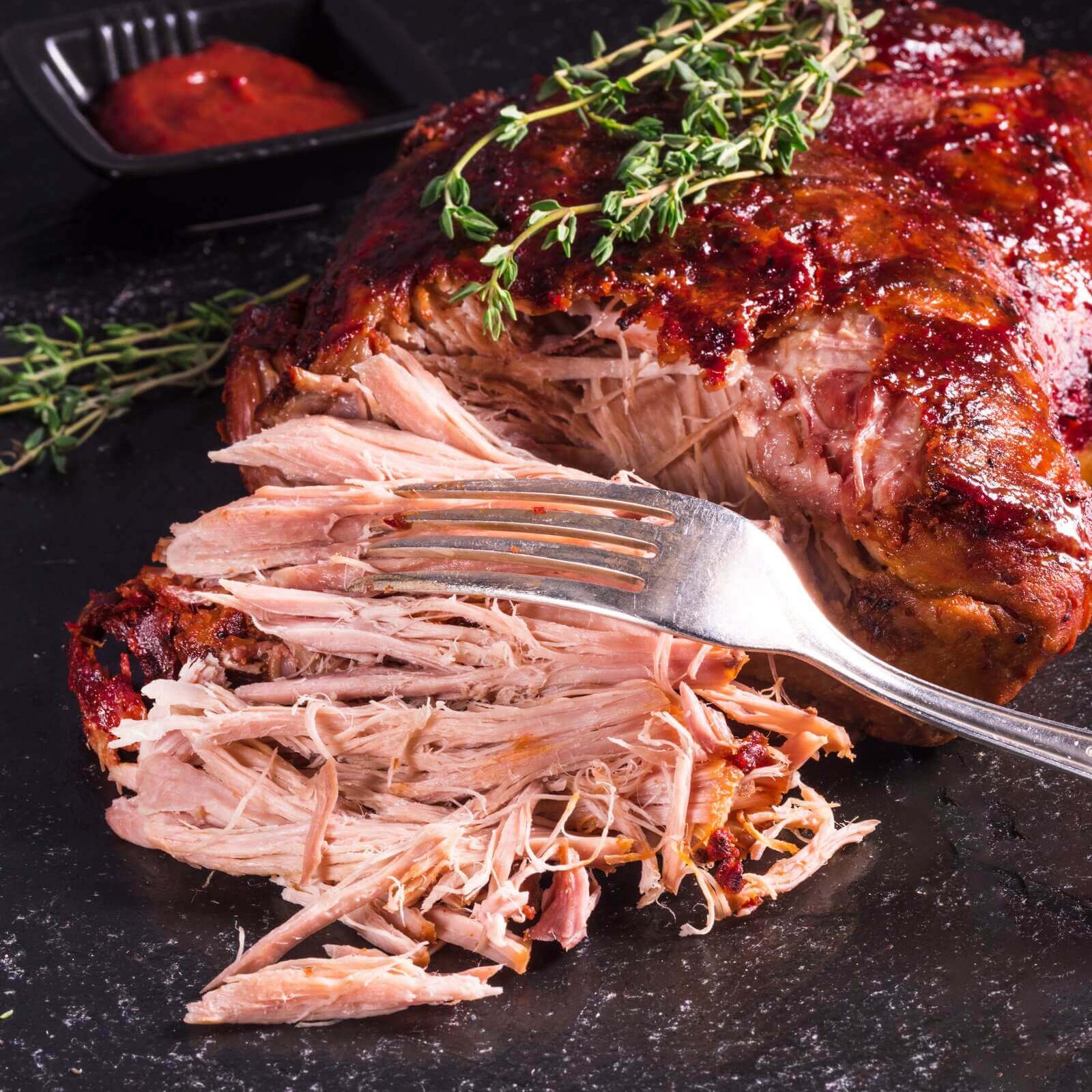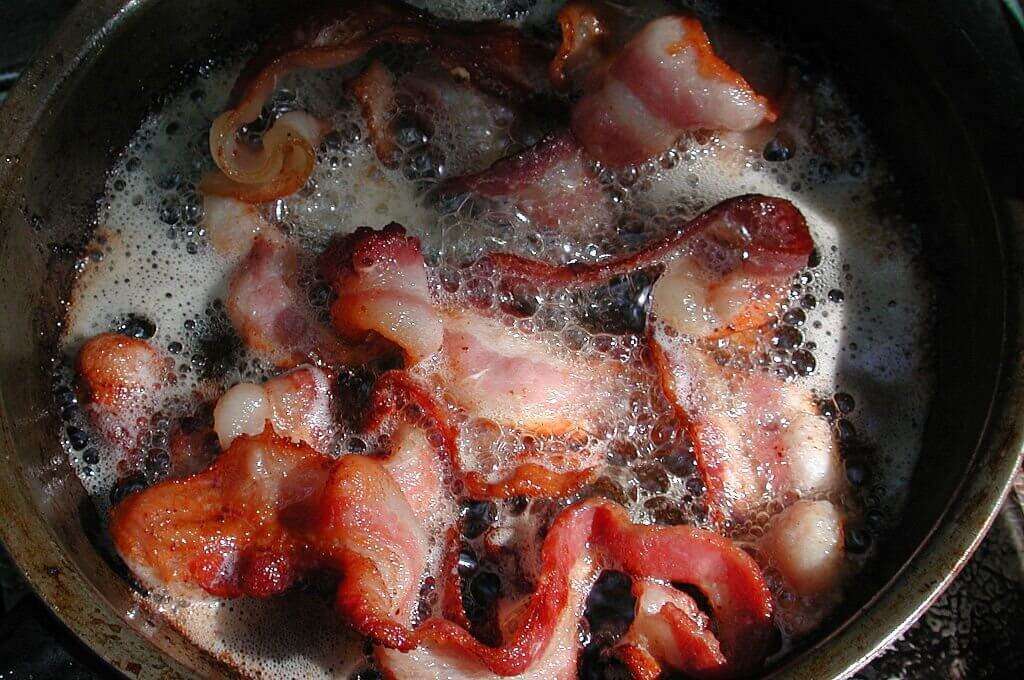Pork is the preferred meat for some people, while others avoid it for various reasons. Like most other meat, pork has different cuts; pork chops, spare ribs, loin, ham, pork tenderloin, pork belly, etc.
Pork belly is one of those meals on the menu that immediately gets us excited. While we mean no disrespect to the other pork cuts, pork belly is quite simply *chef’s kiss* elite. One of the best things about pork belly is that no matter how much of a pork specialist you consider yourself to be, there’s always something new to learn.
Is Pork Belly Fatty?
Pork meat is generally fatty, and the belly is no exemption. Pork belly comes from the belly of the pig; much like the name implies, and a cut of whole pork belly has visible slabs of fat along the top and pockets of fat inside the chunk of meat.
The meat is made up of three layers; the skin being the topmost layer and a thick layer of fat between the skin and pinkish meat.
Pork Belly Fat Percentage
A 113-gram cut of pork belly will give you these nutrients;
- Saturated fat: 22 grams
- Calories: 585
- Total fat: 60 grams
Basically, a slab of pork belly is around 90% fat and 10% protein.
Is Pork Belly Healthy for Weight Loss
Compared to other pork cuts, pork belly contains higher levels of fat and calories, and less protein. This makes it not the best option for people who are on a strict diet plan trying to reduce their calorie intake. More pork belly fatty content means higher consumption of saturated fat, and a high intake of saturated fat can be linked to heart disease and other health conditions.
Protein, an essential nutrient, is found in lower levels in pork belly. Comparing a 113 gram of pork belly to a 113 gram of pork loin, pork belly contains 14 grams of protein less. If you are working with a protein-laden diet, you might want to opt for other options such as pork loin, ham, or pork tenderloins.
While pork might not be the healthiest food out there, we can’t deny that it is a delicious addition to any table. Across the world, pork belly is enjoyed in different ways; Americans prefer to cook their pork belly as bacon, while Asians include it in their very diverse cuisine. The Italians enjoy “Pancetta”, a delicious meal made from seasoned and dried pork belly.
So, if you enjoy pork belly, an occasional portion won’t completely destroy your diet as long as you eat it in moderation.
Is Pork Belly High in Cholesterol
Pork belly contains high amounts of cholesterol due to the fatty nature of the meat, but this is not necessarily a bad thing. 50% of monosaturated fat is what is known to some as “good fat”. These fatty acids can be found in olive oils and avocado, and are touted to boost the body’s ability to fight cancer.
The rest of the pork belly fatty content is saturated and polyunsaturated fat. Polyunsaturated fat, when consumed in high amounts, is linked with inflammation and oxidation. Saturated fat, on the other hand, is healthy and an essential part of our diet.
Read also: Can You Get Sick from Eating Expired Food Coloring?
Benefits and Disadvantages of Eating Pork Belly
There are many benefits to including pork belly in your meal plan.
Taste
Pork belly has a distinctive, rich flavor; the pork belly’s fatty levels make it the tastiest pork cut. Slow-cooking the meat will bring out the succulent and savory flavor all the more.
Versatile
Pork meat’s versatility means that it can be enjoyed as a part of various cultures’ cuisine. From American bacon to Italian pancetta and Chinese Siu youk, pork belly can be cooked to everyone’s taste.
Affordable
You don’t need to break the bank with pork belly; it is more cost-effective than other choice pork cuts such as tenderloin. Pork belly might be the answer to your low-budget dinner needs with its succulent flavor and affordability.
On the other hand, there are disadvantages to eating pork belly.
Low in protein
Pork belly contains fewer amounts of protein than other pork cuts but has impressive amounts of saturated fat, total fat, and calories.
Read also: Is Shrimp Poop Safe to Eat?
What is Braised Pork Belly?
Braised pork belly is a slow-cooked pork belly meal that’s eaten in China. The sweet and savory flavor of a well-prepared braised pork belly makes it a mouth-watering meal that goes down well with anyone who tries it.
Braised pork belly is easy to cook; the recipe does not call for complicated ingredients, and cooking time is less than 2 hours. If you’re not much of a cook, Chinese restaurants offer variations of braised pork meals.
https://www.youtube.com/watch?v=o1OWq68Zcs4
Is Smoked Pork Belly Fatty?
Smoked pork belly makes for a very flavorful, juicy, and tender meat. Smoking it allows the meat to lose some of its pork belly fatty content, but be careful; you could be left with very dry meat if you don’t do it properly. You can also filter out some of the fatty meat before smoking to eliminate excess fat.
When pork belly is properly smoked, the meat is fat-free, but not too dry that it loses its original taste. If you wish to store pork belly, we recommend that you smoke the meat and store in your fridge for up to 2 weeks, or 3 months in your freezer.
Pork belly is definitely not a new addition to cuisines, but it is gaining popularity in more countries as they discover how versatile and flavorful the meat is. While some people prefer to leave pork meat out of their diet due to personal or religious reasons, there is no denying the absolute deliciousness of our favorite guilty pleasure.
Pork belly can be a healthy inclusion in your diet when properly prepared; and with the variety of ways this meat can be prepared, there’s little hindrance to how creative you can get with your meat.




